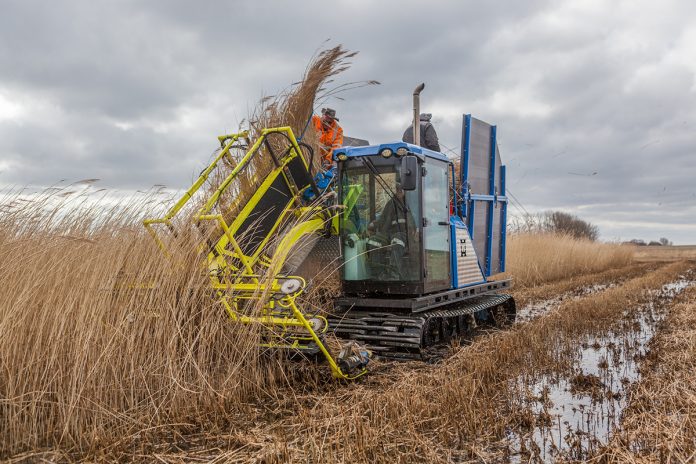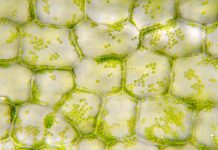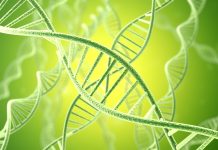
Experts in Agricultural and Environmental Sciences Bernd Lennartz, Franziska Tanneberger and Nicole Wrage-Mönnig discuss the complex effects of peat soils on the climate
In the northern German federal state Mecklenburg-Vorpommern, peatlands are the number one source of greenhouse gas emissions. In the discussion on cutting emissions from traffic and industries, it is easily overlooked that organic soils (peat soils) might be by far more important in the release of greenhouse gases than other sources. 13% of the land surface area in Mecklenburg-Vorpommern are covered by peatlands. Like elsewhere round the globe, these valuable ecosystems have been artificially drained for agricultural purposes and the soil has been, thus, converted from a carbon sink into a carbon source.
Today drained peatlands in Mecklenburg-Vorpommern emit far more carbon dioxide (CO2) than the entire forest area sequesters per year.
Lowering the water table in peatlands results in the aeration of the soil. The organic matter that accumulated under reducing conditions (absence of oxygen) over thousands of years gets oxidised and is finally converted into CO2. In this sense, draining a peatland is similar to burning fossil oil or gas. Besides CO2, a bunch of other compounds such as N2O, which has a dramatically stronger warming effect than CO2, may be released as a consequence of drainage. The process of mineralisation of organic matter is termed degradation and is accompanied by subsidence of, over longer periods or in warmer climates, several metres. The peat degradation continues as long as low water tables are maintained and a once pristine peat with almost 100% organic matter turns into a mineral soil with less than 30% organic matter.
There is much more to peat soils than carbon storage and it is too simplistic to reduce the debate to greenhouse gas emissions. Peat soils stand out in terms of physical properties, too. They have an extremely high porosity and, thus, are predestined to store water. The pore architecture changes dramatically upon drainage at early stages. Although the total porosity of peat soils remains high with degradation as compared to mineral soils, important functions such as the hydraulic conductivity are reduced, which, for instance, can have far-reaching consequences for landscape connectivity. The overall role of peatlands in the landscape in terms of water provision and purification is, thus, also altered along with drainage. Peatland drainage simply means less clean water in our landscapes.

WETSCAPES project
Rewetting drained and degraded peat soils has been identified as a management option to reduce the emissions of greenhouse gases along with other co-benefits. During earlier stages of research, some scientists drew attention to the fact that rewetting potentially worsens matters by increasing the release of the greenhouse gas methane in inundated sites. Today we know better and learned that also in rewetting peat soils attention to detail is needed and water tables can be fine-tuned for optimal climate impact. Moreover, in terms of climate effect, the continued release of the long-term accumulating CO2 from drained peatlands is much worse than the release of the short-lived greenhouse gas methane, and a choice must be made between the two. Even in (in geologic terms) short time periods of one or two decades, peat soils are again not only a carbon and greenhouse gas sink but also a vital player in the water cycle of a landscape. The multi-institutional and interdisciplinary research project WETSCAPES helps understanding these processes in fen peatlands, the most widespread peatland type in the temperate zone.
The conversion process does not necessarily mean that agriculture or forestry must be abandoned on rewetted peatlands. New farming systems, termed paludiculture, allow to combine the positive effects of rewetting with biomass production. Promising ongoing projects demonstrate that the cultivation of, for instance, Sphagnum mosses to replace peat in horticulture, Reed and Cattail to produce building materials (e.g. insulation), and sedges to generate energy is actually working. Paludiculture protects the peat soil, new peat is accumulated, and farmers can produce (new) agricultural goods in a climate-smart, sustainable manner.
From a societal perspective, we must decide which management of peat soils is most beneficial for us as human beings and for the globe. This debate has to weigh ecosystem functions and services such as food/energy production, climate protection as well as quantitative and qualitative functions in the water cycle. If greenhouse gases such as CO2, N2O and methane would be poison-green and horribly stinking, the discourse would have been long decided. Imagine our (beautiful) landscapes drowning in a green and foul-smelling mist… The discussion is not whether we shall have a productive agriculture or a biodiversity-promoting nature conservation reserve. Paludiculture is a third way, which has the potential to stimulate regional value-added chains including the establishment of new industries while providing various ecosystem services, including biodiversity typical for wet peatlands. The road from a research stage to large-scale rewetting and conversion of degraded peatlands has to be paved by policies, which in the case of Europe, lie in particular in the hand of the European Union and its Common Agricultural Policy, which is currently reformed. It is time to centre degraded peatlands much more in the global climate change debate.
Recent studies from the WETSCAPES consortium on the impact of rewetting on greenhouse gas emissions, peat degradation and N2O emissions as well as rewetting strategies and political implications are available.
Details on the WETSCAPES project and additional publications can be found here. The Greifswald Mire Centre provides valuable information on peatlands and paludiculture.
Please note: This is a commercial profile










